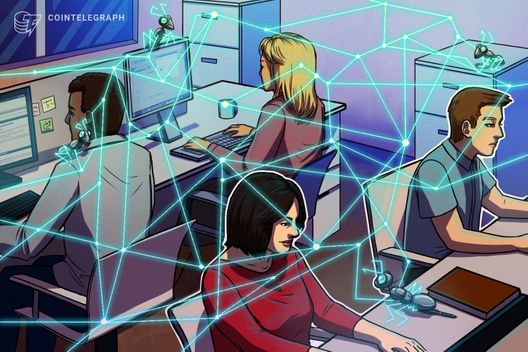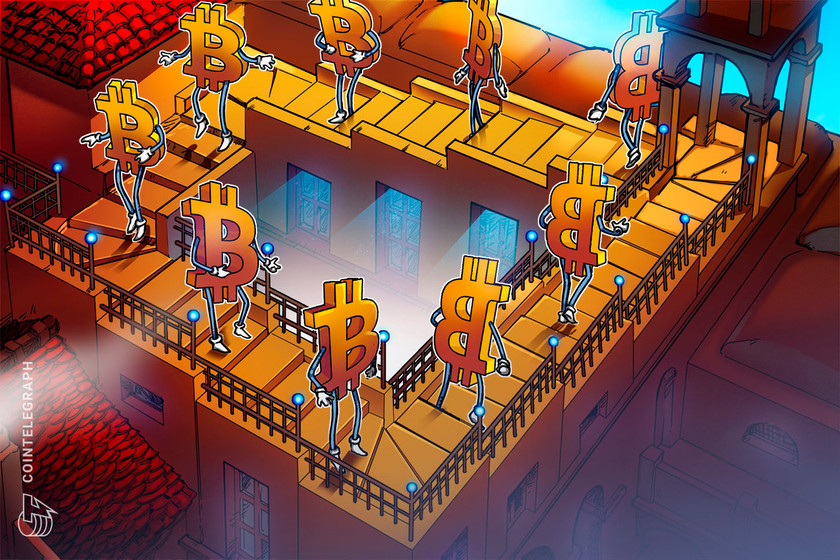What Recent Developments in the Fintech Space Mean for Our Future
The fintech industry has been changing rapidly. Digital assets, distributed ledger technology and central bank digital currencies are gaining momentum. Multi-trillion-dollar United States Federal Reserve System money creation has increased demand for digital assets, particularly Bitcoin (BTC).
Banks, brokers, commercial lenders, investment advisors, private investment funds, family offices, mutual funds, fintech entrepreneurs, lawmakers and private citizens should take note of several developments in this space.
Old wine, new bottles
The use of ledgers to track events and transactions is of ancient origin. DLT and blockchain technology combine venerable record-keeping techniques with new technologies — like storing old wine in new bottles.
A primary goal of DLT is the creation of records with entries that must be verified by several, distributed parties in close to “real” time, making forgery much harder to achieve. No trusted intermediary is needed. DLT and blockchain technology differ in some respects. For instance, blockchain technology is generally permissionless or public, whereas DLT is generally permissioned and not publicly accessible. The prospective benefits of implementing DLT and blockchain technology connect many industries and countless applications.
Background on digital assets
Bitcoin and other digital assets, as with gold and other commodities, are goods to which people ascribe value in market transactions. Unlike gold, however, one can send or receive digital assets to or from anyone, anywhere in the world, instantaneously.
The demand for digital assets, such as Bitcoin and CBDCs, including U.S. digital dollars, reflects the changing needs and desires of computer-savvy participants in the 21st-century economy. Only some banks have accounts with the Fed. Digital dollars have the potential to change that by allowing or perhaps requiring companies and individuals to open and maintain Fed accounts.
Congress and the Fed take on digital dollars
Centrist members of Congress, notably Illinois Democrat Bill Foster and Arkansas Republican French Hill, have been prodding the Fed to develop digital dollars. In a letter to Fed Chairman Jay Powell dated Sept. 30, 2019, Foster and Hill posed several pointed questions about digital dollars. They emphasized that “the primacy of the U.S. Dollar could be in long-term jeopardy from wide adoption of digital fiat currencies” and that the “usage of digital assets may well increasingly align with that of paper money in the future.”
Chairman Powell responded on Nov. 19, 2019, that the Fed would continue to consider a CBDC for the U.S. but that the process would take time and careful consideration. He added that the motivations of other countries for pursuing CBDCs, such as the lack of “fast and reliable digital payment systems,” is not particularly relevant to the U.S.
Building momentum for digital dollars
Contra the Fed’s go-slow approach, other financial leaders have been advocating for the adoption of digital dollars. Former FDIC Chair Sheila Bair testified before the Senate on Sept. 25, 2019, that digital dollar technology has been developing quickly and offers many prospective benefits, including nullifying the need for intermediaries and avoiding centralized ledgers with single points of failure.
Politicians, professors, fintech leaders and out-of-office bureaucrats continue to push the conversation, too. Of particular note in this regard is the Digital Dollar Project, a partnership between Accenture and the Digital Dollar Foundation. Digital Dollar Project publications offer commentary on digital dollars, including a U.S. CBDC that would be tokenized.
Digital dollar legislation catalyzed by the COVID-19 pandemic
The conversation about digital dollars came to the forefront again during the COVID-19 pandemic through new pieces of legislation, including the “Banking for All Act” and the Automatic BOOST to Communities Act, or the “ABC Act” introduced in March and April 2020, respectively. Both the Banking for All Act and the ABC Act present digital dollars as a more efficient delivery mechanism for stimulus relief funds, among other pieces of legislation that discuss digital dollars.
These pieces of legislation provide an important step forward, but implementing new technologies will not happen all at once. For example, the digital dollars issued under the ABC Act would not be crypto assets, would not be CBDC and would not be used on a DLT network. The digital dollars issued under the ABC Act would be debt notations on a centralized ledger held by Americans in digital dollar wallets. Both the centralized ledger and the digital dollar wallets would be maintained by the Fed. In other words, American citizens would have individual accounts with the Fed.
Even though digital dollars legislation has yet to proceed in Congress, the Fed and U.S. lawmakers seem to be paying close attention to the evolution of digital assets. For instance, under the ABC Act, the Fed would issue digital dollars alongside the minting of two $1-trillion platinum coins. This requirement reflects aspects of so-called stablecoins, which are crypto assets backed by other assets (such as U.S. dollars or precious metals).
If digital dollars legislation actually proceeds, the impacts on the lives of millions of Americans would be significant. Indeed, tens of millions of Americans are unbanked or underbanked. These Americans could benefit directly from improved access to stimulus funds and other forms of governmental assistance. Considering that penny production will cease as of April 1, 2022, it seems plain that the Fed intends to “go digital” over time and perhaps more quickly than might have been predicted even just a few months ago.
Uses and benefits of digital assets
Those who are “bullish” on Bitcoin and other digital assets largely reacted positively to the news about digital dollars. Even though digital dollars remain a developing concept, many view their prospective adoption as a legitimizing force for digital assets in general, including crypto, which might result in more mainstream adoption. With limitless design possibilities, digital dollars, CBDCs and similar digital assets could be structured to serve a variety of purposes, including:
- Fraud and corruption prevention. Fraud and abuse of government grants and loans are a concern for many, especially after the bail-out programs associated with the great recession of 2008. If digital dollars were used, they could be tracked reliably and in real-time such that the legal restrictions on use could be enforced far more easily. For example, the design of digital dollars could prevent the purchase of non-essential items like tobacco, while simplifying purchases of food, mortgage payments or rent, as well as uses for other ordinary necessities.
- Data benefits. Data on digital asset use and currencies, like digital dollars, could be collected and analyzed to determine more accurately how much potential demand exists, so future issuances, laws, policies and regulations can be tailor-made.
- Efforts to minimize inflation. Digital assets that are decentralized, or are outside the control of a central bank, may provide a hedge against inflation fears because the decision to introduce more of them into the economy would not be made by a single entity, nation or individual. The hedge against inflation, in theory, works especially well with digital assets that are hard-capped, or limited in supply, like Bitcoin. Greater global investment in and reliance on decentralized digital assets as stores of value could lead to a more inflation-resistant future. Also, the efficiency and access benefits of digital assets could mean that more people worldwide could participate in contributing to global investments and capital, particularly those from rural areas or living in less stable locales.
- International trade. International, decentralized digital assets could facilitate the expansion of international trade and improved access to international markets for economies that are unbanked, underbanked, or forced to use weak currencies subject to extreme inflation. The economies of several African and Latin American countries would likely benefit from such digital assets. In the right international legal framework, a global market that is more resilient at withstanding future disasters, including pandemics, is possible, and digital assets may prove to be part of the solution.
- Bribery and corruption. Bribery and corruption are key issues for participants in cross-border trade. Again, digital assets can facilitate better oversight and transparency, mitigating the use of funds by criminals, terrorists and other compliance risks. In this connection, the U.S. Foreign Corrupt Practices Act, the United Kingdom Bribery Act and related laws could be amended and strengthened by including or accounting for digital assets. Legitimate privacy concerns can be addressed by product design and lawmaking.
- Cybercrime. With a global population increasingly enabled to “work remotely” or “work from home,” many fear an increase in cybercrime — particularly due to the typically weak infrastructure of the average home office. Increased use of digital currency could improve the security of a working society that is increasingly digital and decentralized, particularly since technology can be leveraged to identify, locate, and apprehend hackers and cybercriminals.
Financial and technological superiority
As other countries, especially China, research and develop their own CBDCs, pressure on the U.S. to respond and to lead continues to mount. The design of these assets is rightly a topic of wide-ranging debate, and, as discussed above, the emergence of legislation addressing digital dollars is a step in the right direction.
Congress is nearly equally in favor of digital assets, like Bitcoin, and opposed to it. Some assert that digital assets need to be controlled by the Fed; others reply that the very point of digital assets is to escape the control of central authorities.
Given the recent economic downturn largely associated with the COVID-19 pandemic, there has arguably never been a better time for entrepreneurs, governments and individuals to create currencies, technologies, laws and policies that will better ensure a more stable, resilient future.
Professional investment community sees value in digital assets
Helping to build the legitimacy of recent developments in the fintech industry and digital assets, many members of the professional investment community increasingly view certain digital assets, including hard-capped Bitcoin, as a hedge against the adverse monetary and fiscal consequences many fear will follow the Fed’s recent printing of trillions of dollars. Legendary investors Paul Tudor Jones and David Swensen have seen their investments appreciate at rates that exceed other asset classes, year-to-date. Tudor Jones and Swensen would likely add that the short-term performance of Bitcoin has been irrelevant, given the asymmetric upside and potential diversification benefits that Bitcoin provides.
Ray Dalio, the chief investment officer and founder of Bridgewater Associates — one of the largest and most successful hedge fund managers — also has concerns over the U.S. dollar’s role as the world’s reserve currency, given the unprecedented and on-going increase in U.S. dollar creation. Dalio has noted that reserve currencies go through cycles and that, just as the British pound was the world’s reserve currency before the U.S. dollar, so too the dollar is now facing reserve status challenges by China. Challenges to the U.S. dollar’s world reserve status, which may result in decreased demand, may make diversification into gold and, increasingly, digital assets like Bitcoin, more appealing to other investors.
The past several months have resulted in a significant movement forward for digital assets. Continued growth and changes in this space are expected for the foreseeable future.
This article does not contain investment advice or recommendations. Every investment and trading move involves risk, you should conduct your own research when making a decision.
The views, thoughts and opinions expressed here are the authors alone and do not necessarily reflect or represent the views and opinions of Cointelegraph.
This article was co-authored by Patrick Daugherty, Michael Bresnahan Jr. and Zane Hatahet.
Patrick Daugherty is a partner at Foley & Lardner where he directs a corporate, mergers and acquisitions, finance, financial regulatory and fintech practice devoted to capital formation, innovation and return of and on investment. He also leads the firm’s blockchain practice.
Michael Bresnahan Jr. is an associate at Foley & Lardner. He counsels fund managers on the formation and operation of venture capital, private equity, private credit, real estate and hedge funds. Michael also advises on public pension plans, university endowments, fund-of-funds, family offices and other institutional investors, and advises other clients on securities and fintech issues.
Zane Hatahet is an associate at Foley & Lardner where he advises on a wide range of business matters, including securities regulation, mergers and acquisitions, and corporate finance and governance.
Their fintech law practice encompasses SEC, CFTC, Treasury FinCEN and other financial regulatory matters, mergers and acquisitions, finance and corporate legal services for public companies, entrepreneurs, broker-dealers, exchanges, registered investment advisers, venture capital, private equity, private credit, real estate and hedge funds, exchange-traded funds, public pension plans, university endowments, fund-of-funds, family offices and other institutional investors.









